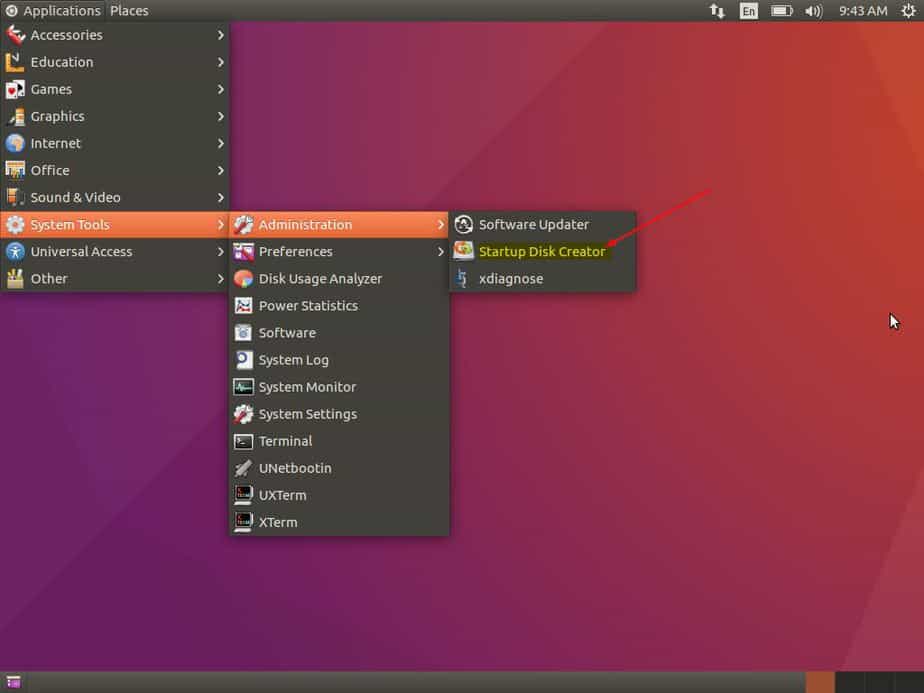

- HOW TO MAKE A UBUNTU BOOTABLE USB ON WINDOWS HOW TO
- HOW TO MAKE A UBUNTU BOOTABLE USB ON WINDOWS INSTALL
- HOW TO MAKE A UBUNTU BOOTABLE USB ON WINDOWS WINDOWS 10
- HOW TO MAKE A UBUNTU BOOTABLE USB ON WINDOWS ISO
- HOW TO MAKE A UBUNTU BOOTABLE USB ON WINDOWS DOWNLOAD
Install Ubuntu from USB in Dual Boot with Windows 11 & 10 It takes a while, but when it’s finished, click CLOSE.Leave all the other settings as default and click START.
HOW TO MAKE A UBUNTU BOOTABLE USB ON WINDOWS ISO
Alternatively, you can just drag and drop the ISO onto Rufus.
Click the SELECT button and select the downloaded Ubuntu ISO. Select your USB drive from the drop-down menu under Device. Rufus is a utility that helps create bootable USB flash drives, such as USB keys/pen drives, memory sticks, etc. HOW TO MAKE A UBUNTU BOOTABLE USB ON WINDOWS DOWNLOAD
Download the latest Ubuntu ISO image from the official website. Since most laptops these days lack a CD-ROM, a live USB is more universal, not to mention faster. Next on the list is creating a live Ubuntu USB that you can boot from. HOW TO MAKE A UBUNTU BOOTABLE USB ON WINDOWS HOW TO
Related: How to Edit GRUB with GRUB Customizer Create a Bootable Ubuntu Live USB
When it does, you should see a new unallocated partition. When you’re ready, click Shrink and wait for the process to finish. If you want to use it daily and install all kinds of apps, 100 GB would be more than plenty. For Ubuntu, a minimum of 25 GB should be quite enough if you don’t plan on installing many apps. Adjust ther numbers in front of Enter the amount of space to shrink in MB if you don’t want to use all the available space. Right-click on the partition which has enough space or the partition that you would like to create a new partition from. Towards the bottom, you can see all the disk partitions. Click on Disk Management in the left column of the Computer Management window that opens. Right-click on the Start button and select Disk management. The Ubuntu Live USB we’ll need for installation actually allows creating and managing partitions, but it’s safer to do this from Windows itself if you don’t want to lose any of your files. The best way to do it is to create a separate partition for Ubuntu so that your Ubuntu installation does not mess with Windows in any way. In order to install Ubuntu on your Windows computer, you’ll first need some space on the hard disk, of course. A USB drive with a capacity of 4 GB or more. At least 25 GB of available space on the hard disk. Related: KDE Plasma Desktop on Ubuntu Linux: Complete Guide Requirements Besides, what have you got to lose since, in a dual boot set up, you get to keep Windows, all your files, and you can just get rid of Ubuntu anytime you want to. You’ll end up using the command line more often than you might want, but as you get used to it, you’ll realize it’s much easier than you thought. New users can feel a little lost since it’s a whole different OS. There are many similar little features that make Ubuntu a joy to use, compared to Windows. Features like virtual desktops that Windows got quite recently have been present on Ubuntu and other Linux distros for quite some time. It is definitely the most popular, which makes getting support for it on online forums much easier. It’s the most beginner-friendly Linux distribution, or at least one of them. Ubuntu, on the other hand, feels like a more modern desktop. Things are changing now with the Microsoft Store, but like I said, one leg in the modern world and another in the 90s. 
We’ve all been taught in school that it’s user-friendly, but is it really? Something even as basic as installing and uninstalling apps takes so many clicks. Windows is clunky if I had to use one word for it. But Windows has a lot of annoyances, with one leg in the modern world and one in the 90s. It’s the most popular desktop OS and generations have grown up on it, so it will probably remain popular for a while.
HOW TO MAKE A UBUNTU BOOTABLE USB ON WINDOWS WINDOWS 10
Why Should you Install Ubuntu?īoth Windows 10 and 11 have come a long ways, but they are still just that, Windows. Let’s see how to install Ubuntu and Dual Boot Alongside with Windows 10.

This gives you the advantage of being able to use a more familiar OS when you really need to get things done fast and easy while you’re still learning your way around a new OS. You can install Ubuntu from USB in dual boot alongside Windows 10 or Windows 11. You don’t even have to sacrifice anything. If you’ve been contemplating switching to Ubuntu, now is probably as good a time as any.







 0 kommentar(er)
0 kommentar(er)
